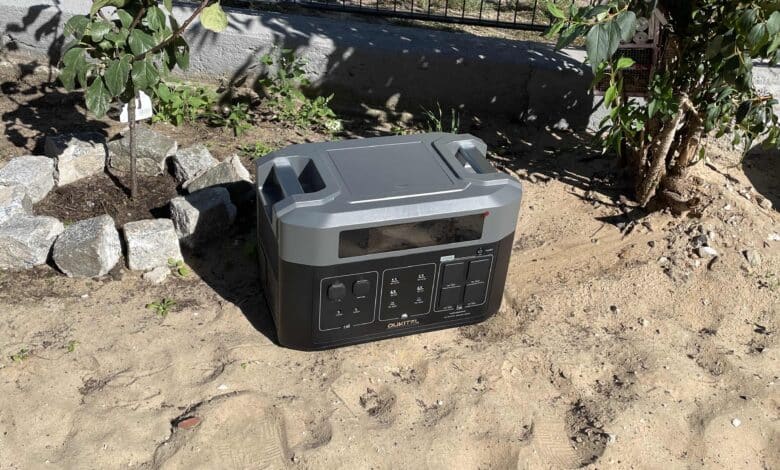
Modern energy solutions are more popular than ever before. Many homeowners are currently equipping their roof with a photovoltaic system to produce green electricity on their own. Even those who live in an apartment can independently collect solar energy thanks to a balcony power plant and save a lot of money in the process. The prerequisite for this, however, is that you have a suitable storage system. Otherwise, the electricity collected during the day quickly fizzles out if it is not used immediately. In today’s Oukitel BP2000 review, we want to take a look at a customized storage unit for balcony power plants. It should not only serve as a practical energy storage for your PV system. You can also easily take it with you on your travels and produce electricity everywhere with the help of the matching PV panels. Does this ambitious plan work? We’ll take a look!
Technical data
| Dimensions and weight | 480 x 296 x 322mm and 23.6kg |
| Battery capacity | 2,048Wh |
| Battery technology | LiFePO4 |
| Lifetime | Over 3,500 charge cycles |
| Output power | Continuous power: 2,200W Peak power: 4,000W |
| Input power AC | 1,800W |
| Input power solar | 1,000W |
| Input power car | 120W |
| Outputs |
|
| Price |
|
Scope of delivery
For the test, Oukitel provided us not only with the BP2000, but also with a matching B2000 auxiliary battery and a solar panel in the form of the PV400. The scope of delivery turned out accordingly lush.
- Oukitel BP2000 Powerstation
- Oukitel B2000 auxiliary battery
- 1x charging cable AC
- 2x Adapter (XC60 to car) -> car charging
- 2x Adapter (XC60 to MC4) -> solar charging
- 1x Connector cable B2000 and BP2000
- Oukitel PV400
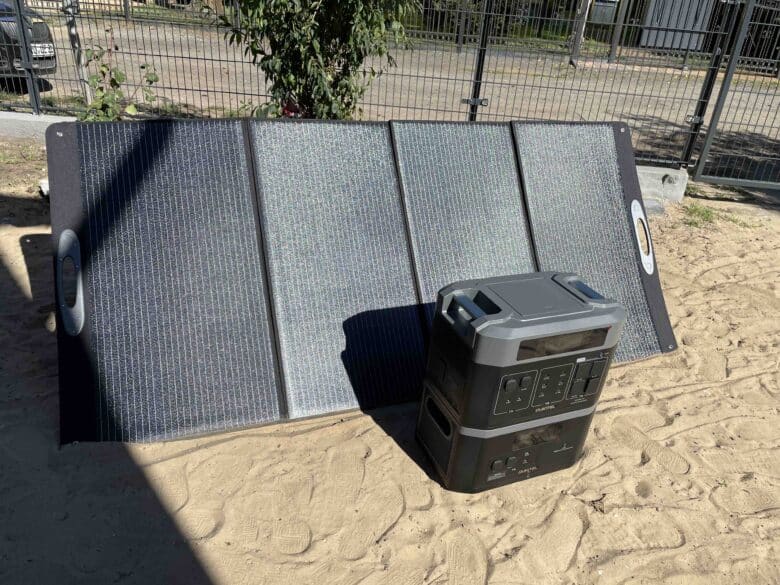
The scope of delivery is pretty much the same for both devices. However, while the BP2000 has an AC cable on board, a suitable connection cable for both devices comes with the B2000. Oukitel does without the charging cable for the B2000, since it cannot be charged via AC anyway. This is only possible indirectly when it is connected to the BP2000.
Oukitel BP2000 review: design and workmanship
- Design is reminiscent of EcoFlow’s Delta series
- Good build quality (exception: covers on the outlets)
- Transport handles facilitate transportation
- 480 x 296 x 322mm and 23.6kg
Anyone who has come into contact with other powerstations will also quickly recognize the Oukitel BP2000 as such. This is due to the color scheme, among other things. The color combination of light gray and black is very reminiscent of the EcoFlow models. However, there is one small thing that stands out. The cuboid-shaped power station is quite angular. This has a very specific reason, which is the expandability of the storage. Thanks to the flat surface, you can easily stack additional batteries in the form of the Oukitel B2000.
But the BP2000 isn’t just meant to serve as a pure energy storage device that ekes out its existence on the balcony or in the basement. Instead, you should also be able to use it comfortably on the festival grounds or at the campsite. So that you can also transport the 23.6 kg power station, it has two practical carrying handles. In view of the rather high weight, however, the manufacturer should definitely still think about further accessories.
So I would consider a wheeled case solution, such as the FOSSiBOT F3600 (test), to be practical. With its dimensions of 480 x 296 x 322mm, you should be able to fit the BP2000 in your trunk with ease. I find the storage compartment, which is located on the top, to be extremely practical. Here you can store the necessary cables, which effectively prevents the loss of the same.
Additional battery with identical design language
- Black and gray also dominate B2000
- 474 x 296 x 241mm and 18.5kg
- Display at powerstation and additional battery
At the front of the powerstation are not only the necessary connections. On top of that, you’ll find a respectable display here. The B2000 is also designed in the same way. You’ll also find a chic combination of gray and black on the 18.5 kg and 474 x 296 x 241 mm additional battery. The smaller dimensions can mainly be explained by the lack of connectivity.

This is more of a large format powerbank that wants to be connected to the BP2000. All in all, Oukitel scores with a good build quality here. The only thing that pissed me off were the covers of the larger ports. These tend not to spring back into their original shape after only a short time.
Oukitel BP2000 review: port diversity
An important discipline in the field of powerstations is, of course, the number and variety of ports. And this is more than impressive for the BP2000. The mobile energy storage device offers you a total of 15 connections via which you can operate your electrical devices.
Here’s what’s on board:
- 2x USB-C (PD with 100W)
- 2x USB-A (12W)
- 2x USB-A (QC 3.0 with 18W)
- 5x Schuko (2,200W continuous power, 4,000W peak power)
- 2x DC5521 with 12V/3A
- 1x car socket 12V/10A
- 1x AV port 24V/10A
The auxiliary battery in the form of the B2000 is mainly intended as pure additional power storage. Therefore, you can of course not expect a comparable variety of connections here. Nevertheless, the power station in large format also has some ports.

Included are the following ports:
- 1x USB-C (PD with 100W)
- 1x USB-A (12W)
- 2x DC5521 with 12V/3A
- 1x car socket 12V/10A
- 1x XT90 output 48V/15A
All in all, the selection leaves little to be desired. I must especially also highlight the B2000 positive. Although it may not offer Schuko sockets, but the two USB ports should already be enough for many to also use it as a portable power storage for the compact end devices such as notebook and smartphone. More exciting, however, are the ports of the BP2000. And here, the power of the Schuko socket immediately jumps out at me. A proud 2,200W of continuous power is really something to behold. The fact that this can even temporarily increase to 4,000W peak power is no less impressive. In view of the number of connections, everyone should be able to find what they are looking for. However, a small upgrade would have provided a bit more comfort. For example, I find that the extremely flat upper side of the power station just invites to integrate one or even several Qi charging surfaces. The AlphaESS BlackBee 2000 (test) demonstrates how well this works.
Oukitel BP2000 test: user comfort
- Unfortunately, no app connectivity
- Input power only two-stage adjustable (Slow Charging and Quick Charging)
- Display well recognizable
- Storage compartment for cable under lid
As befits a modern power station, the Oukitel BP2000 naturally also comes with a practical display. This is pleasantly informative and reveals a lot of status information. You can not only read the remaining charge status and the corresponding estimated runtime. You can also see which ports are currently supplying power and how high the total input and output power is. I hardly had any problems with the reading here. You only have to accept some losses in bright sunlight. It is no coincidence that the BP2000’s display gives such detailed information. After all, Oukitel launches its big power station without an app. Whether that bothers you or not is up to you.
Personally, I’m a bit conflicted about the whole thing. Actually, I always feel that an app connection for mobile energy storage devices is a kind of gimmick. After all, you can also just get up from your camping chair and check for yourself how long the battery will last, for example. However, since the BP2000 is expressly intended to be used as a domestic energy storage device for the home balcony power plant, I would not have found an app a bad idea. Or wouldn’t you like to check from your workstation how much power your home system is currently producing and how much is going into the power station?
Otherwise, the operation is quite self-explanatory. For example, you can activate or deactivate the individual connection groups at the push of a button. The buttons score with a good pressure point. Apart from that, there is actually only a power button. If you don’t want the station to consume any power, you have to press it briefly and the station shuts down completely. What I personally really miss is a precise regulation option for the input power. Many manufacturers allow this via the app. Others (e.g. FOSSiBOT) rely on a dial on the device itself. Oukitel relies on a two-stage system instead, where you can choose between slow and fast charging. I would have liked more leeway here.
Oukitel BP2000 review: LiFePO4 battery
- More than 3500 charge cycles thanks to LiFePO4
- UPS feature possible
The lack of an app connection may seem old-fashioned. However, the Powerstation is pleasantly modern in the field of battery technology. After all, no old-fashioned lithium-ion batteries are used here. Instead, Oukitel follows the trend of lithium iron phosphate batteries. The LiFePO4 cells have various advantages over the old technology. Probably the biggest one is the longevity. The BP2000 is said to be able to withstand up to 3,500 charging cycles until the battery’s maximum capacity shrinks to 80 percent. But the BP2000 should not only be able to last for many years thanks to its modern technology. On top of that, it offers significantly more safety than comparable models with lithium-ion batteries. LiFePO4 is clearly ahead in the area of fire protection in particular. On top of that, the risk of an explosion is vanishingly small here.

Especially in combination with a balcony power station, the UPS feature should also go down well. The abbreviation stands for uninterruptible power supply and does exactly what the name suggests. In case of a power failure, the power station acts as an emergency power supply. This is a great advantage, especially for devices like your refrigerator. After all, you don’t have to worry about spoiled food in the freezer. But it’s also very practical for your PC at home. If you are playing an important multiplayer game on your computer and the power fails, the BP2000 will quickly step in as a power supplier. You won’t even notice the power failure, because the energy storage kicks in within 10ms.
Oukitel BP2000 review: practical test
The performance data of the BP2000 reads quite impressive. But how does the whole thing perform in practice? We tested it out. You get a continuous power of up to 2,200W and a peak power of up to 4,000W via the Schuko sockets. To push that a bit, I plugged in a few power-hungry devices like impact drills, water and rice stoves to the energy storage unit. Lo and behold, the BP2000 offered the best performance at all times and gave me no reason to complain. Every device I plugged in was adequately powered and ran flawlessly. It was exciting at the point when I exceeded 2,200W of continuous power.
So the kettle and drill were working in parallel, which caused the output power to rise to 3,000W. This was fine for a few seconds, then the power station shut down. So, if you have a device whose power only exceeds the 2,200W at startup and then remains within the possible constant power, operation with the BP2000 is possible without hesitation. Of course, I also paid attention to the user comfort in practice. Especially the volume of a power station plays a big role for me. Unfortunately, the Oukitel BP2000 is shockingly loud here. This is due to the powerful fans. If the output power is below 500W, you might not really notice much of it.
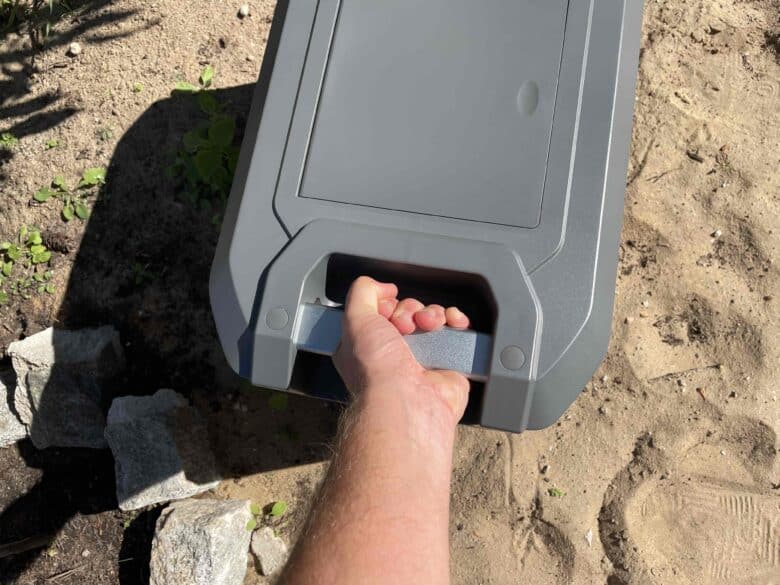
It looks different when the performance goes beyond that. Then the fans really turn up and make a lot of noise. When using already loud devices like a drill, a flex or a kettle, you might not notice anything. However, as we all know, small fry make a mess. So if you connect several smaller devices to the energy storage during your camping vacation, you will quickly reach 2000W. Then you have to put up with a really loud fan noise. If this bothers you, you should definitely keep it in mind. However, there is something positive to be gained from the whole thing. You don’t have to worry about the batteries overheating.
Oukitel BP2000 review: charging via AC, car and solar
- max. 1,800W via AC
- max. 1,000W via solar
- max. 120W via car
- combined charging up to 2,800W (AC+Solar)
Sooner or later, even the large battery of the BP2000 is empty. Then it is called to provide new energy. How you go about this is entirely up to you. The power station offers three different ways to be charged. The charging option via a conventional household socket is particularly fast. Unfortunately, you cannot specify the charging power in detail. This is due to the lack of an app or a suitable control dial, as I already mentioned above. Instead, you can choose between two charging speeds. In the Slow Charging mode, I charged with a bit over 700W in the test. Quick-Charging, on the other hand, produced a charging power of a bit over 1,800W.
Then the battery is charged from 0 to 80% within 1.5 hours. Combined charging is even faster. So you can charge in parallel with solar panel and AC. Here, a maximum input power of up to 2,800W is possible, which lets the battery state jump from 0 to 80% within just under an hour. Unfortunately, Oukitel did not provide us with a sufficiently strong panel for the test with the PV400 solar panel to really test the combined charging. However, the panel itself proved to be an ideal addition for those who also see the power station in mobile use. By the way, charging via the car cable is the slowest. A maximum of 120W is possible here, which is why this should be more of an emergency solution.
Conclusion
The Oukitel BP2000 is an all-rounder that wants to merge two worlds – energy storage for domestic balcony power station and mobile power station for the weekend camping trip. There are many positive things on the plus side. On the one hand, you get a well-built and chic case, but I would have only wished for a transport option like wheels. Perhaps Oukitel will improve this with suitable accessories. Furthermore, there is a good connectivity and a modular design that allows up to 16,000 Wh of battery storage. Modern technology like LiFePO4 and UPS are also on board.

For use in conjunction with a balcony power plant, however, is then missing a little. There is, for one, the missing app. This should simply be mandatory for an energy storage system for the home PV system. Furthermore, in my opinion, you should get a lot more setting options in your hands. After all, you can neither regulate the input power nor the feed-in power. It remains to be said that the Oukitel BP2000 is ultimately much more of a mobile power station than a balcony power storage unit. In view of a price of just under 1,200 Euros, the whole thing still comes with a solid price-performance ratio. The set we tested, consisting of BP2000, B2000 and PV400, is available at Geekbuying at a price of just under 2898 US dollars (with the coupon NNNDEOKBP4).
Oukitel BP2000
Workmanship & design
Hardware
Usability
Performance
Value for money
87/100
The Oukitel BP2000 is a good power station with minor weaknesses. However, it can only be used as an energy storage device for a balcony power plant to a limited extent.



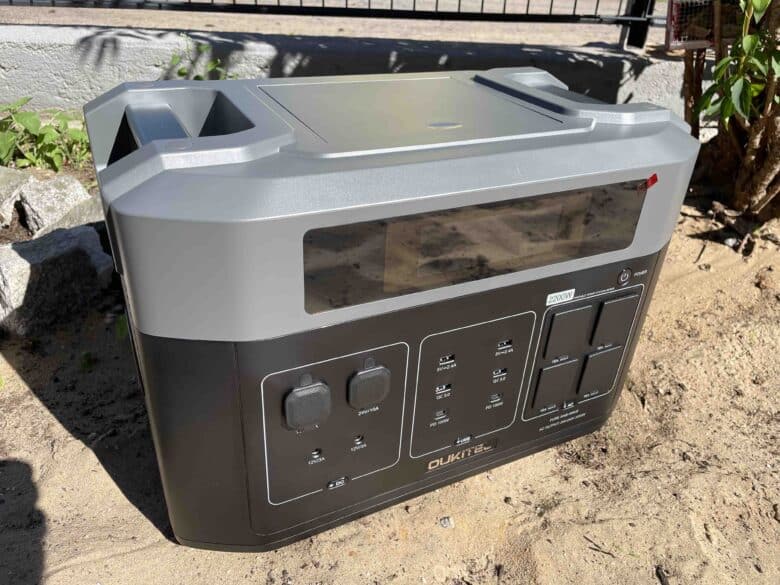

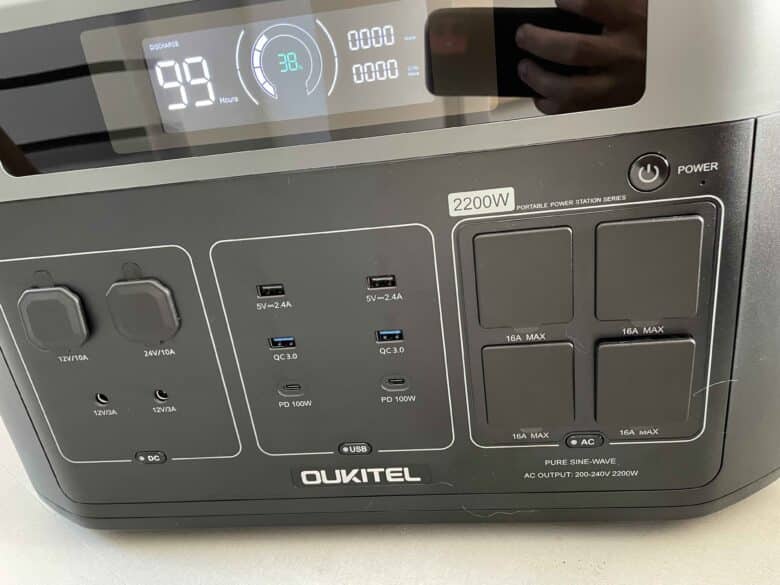
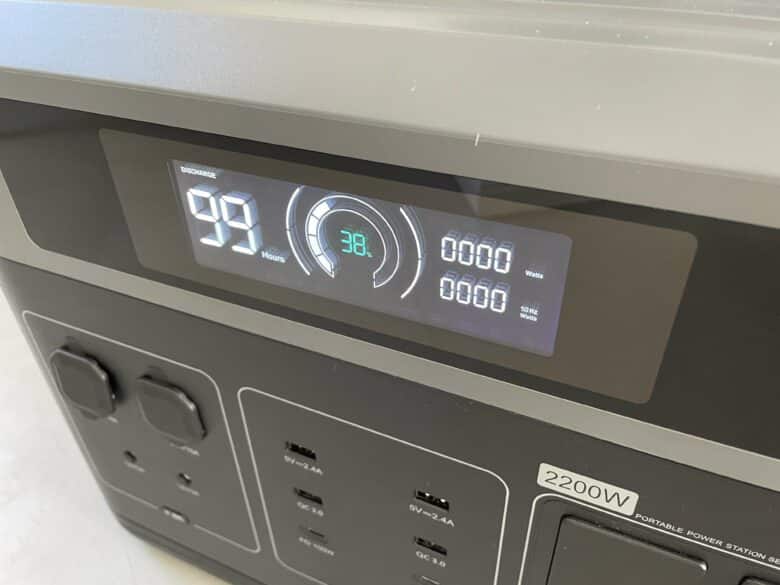


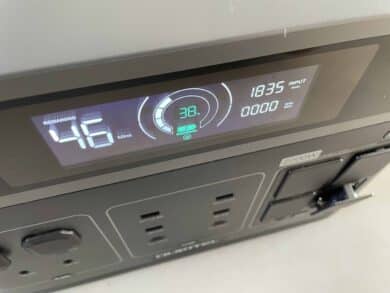
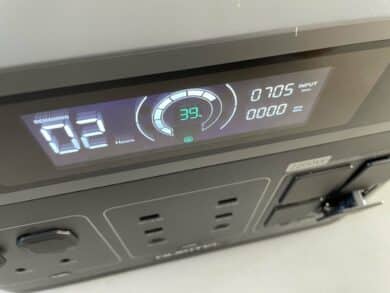



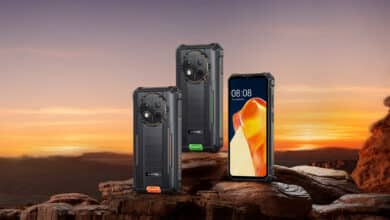
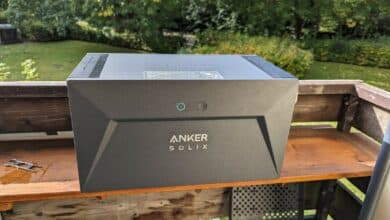
No replies yet
Neue Antworten laden...
Gehört zum Inventar
Beteilige dich an der Diskussion in der Basic Tutorials Community →